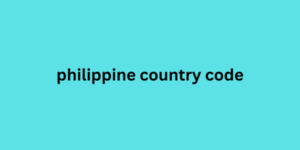Let's look at the most popular options:
Call or SMS message
When a customer contacts a company philippine country code by phone or sends an SMS, their number is saved in the CRM system. To correctly determine the cost per lead (CPL), it is necessary to track the source of the call or SMS. For calls, this can be done using substitute numbers that are generated by special services for various offline sources. Such services are usually expensive, so many small companies prefer not to separate offline channels and determine the cost per lead based on overall results.

The same applies to SMS messages for small companies. Usually in such cases, customers are offered to send SMS to a short number. Using a short number is expensive, so small companies do not always afford it.
QR codes
This is a great tool for attracting people from offline to online. They are unique barcodes containing encrypted information, usually a link to a web page or landing page. One of the main advantages of QR codes is tracking the effectiveness of advertising campaigns. For this, UTM tags are used, which allow you to determine from which sources visitors came.
QR codes
Source: shutterstock.com
An interesting mechanic using QR codes is the creation of quests or games that engage users and motivate them to leave contact information. For example, at events with a large number of people, you can place QR codes that, when scanned, redirect users to a page with a quest. To complete the quest, the user must leave their email or phone number. In the process of completing the quest, the user gets acquainted with the product or service, which helps to increase their interest.
Offer users to take a survey or questionnaire, the results of which will be sent to email or messenger. For example, if the company sells cosmetics, offer users to take a survey about their skin type and then send personalized skin care recommendations.
Questionnaire
When we fill out a questionnaire, we usually don’t think about the fact that we are becoming leads and helping to determine where new customers come from. Questionnaires often include fields for entering a phone number or email address, as well as a question about how we learned about a given company or brand.
When surveys are transferred to electronic form, it is possible to get an overall picture of where new sales leads are coming from, how well known the brand is, whether people recommend it to their friends, how effective radio advertising is, and how often potential customers move from online to offline. This approach is especially important if your business is primarily focused on offline sales but still has an online presence.
To get more accurate data, use additional tools: UTM tags and analytics systems. UTM tags allow you to track the traffic source in more detail, indicating, for example, the specific source or channel from which the client came. Analytics systems provide detailed information about customer behavior on your site or in the store.
In some cases, brands offer to leave contact details to receive a free sample of their product. For example, at trade shows, where managers interact with event visitors. Such campaigns not only help generate leads, but also:
Brand advertising: When people fill out a survey or leave contact details, they become more aware of the brand and its offerings.
Brand introduction: The survey introduces the brand and its values to potential customers.
Brand loyalty: When people take surveys or receive product samples, they develop a positive attitude towards the brand.
Initiating use of the brand's products: Providing samples of the products will encourage people to try them.
Familiarization with brand benefits: The survey allows the brand to talk about its benefits and unique features.
Segmentation: Surveys collect information about customer preferences and needs, allowing you to more accurately tailor your marketing campaigns.
Even large companies make mistakes in using these methods, so special attention should be paid to the correct implementation of the above methods.